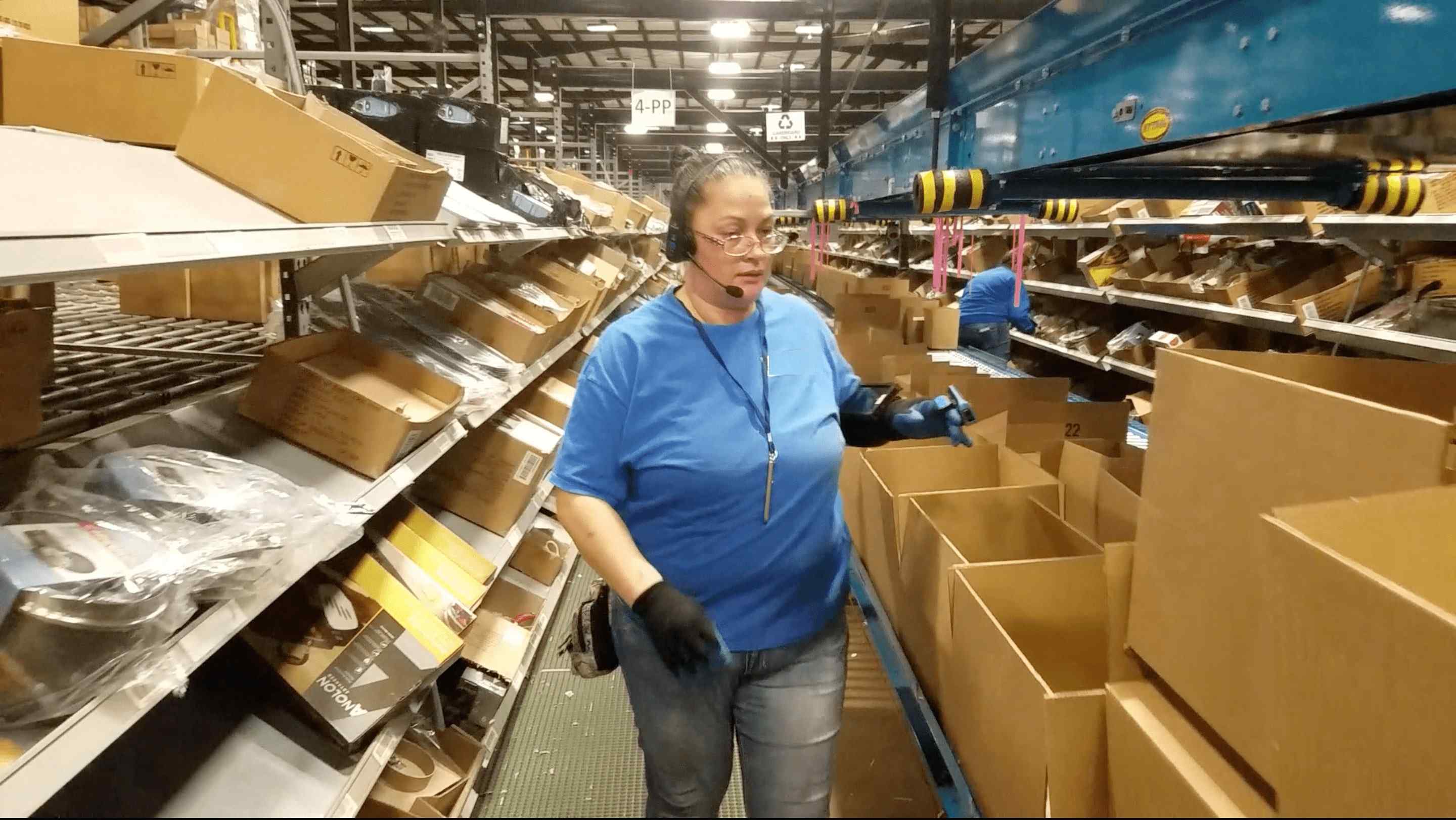Voice Picking and AR as a Warehouse Data Collection Technology
 In the warehouse, excellent data collection processes are critical to accurate inventory counts in real time. By knowing what’s in the warehouse, organizations can fulfil orders quickly, avoid shortages, reduce misspeaks, and deliver the highest levels of customer service.
In the warehouse, excellent data collection processes are critical to accurate inventory counts in real time. By knowing what’s in the warehouse, organizations can fulfil orders quickly, avoid shortages, reduce misspeaks, and deliver the highest levels of customer service.
In the beginning, pen and paper was the only method for data collection. Distribution center (DC) managers created processes, trained personnel, and handed them pads of paper to collect warehouse data. Most of the picking was done based upon paper-based pick documents spit out of printers. To fulfill orders, pickers would go and find the product and then market short picks and back orders on their paper list. Then, at a verification station, the picker or a packer would report the quantity picked into the system and cross check against the paper document. Next, they would print a packing list for the customer and a shipping label addressed to the appropriate retailer and/or carrier.
This old process was cumbersome and paper heavy, using big dot matrix printers. Later, labels made it easy to mark boxes clearly for the customer or the store. Next, barcodes and scanners helped automate the process. Most recently, voice controlled systems have become a reality and vision picking is not too far in the future.
Evolution of Data Collection Technology Tools:

Now let’s look at the process more granularity. At every stage, the common system had elements that were both good and bad.
- Operators write down everything they do in a paper in a pad with a pen or pencil.
- Pre-printed pick sheets, work assignments (sometimes with sticker labels are printed in bulk. Then the pickers would take those sheets, perform the picking processes, then bring the product to a work station, where they would verify the product and the inventory they picked by reporting that to the warehouse management system (WMS).
- The supervisors and/or managers create processes and train operators.


Photo courtesy: Bastian Solutions
- Users log on to RF hand held guns, also called bricks to functions such as picking, receiving, sorting, putaway, etc.
- These guns were originally designed and deployed in retail stores, where store associates performed inventory count for accuracy on an as needed basis.
- Warehouses deployed same devices despite the different nature of the tasks there. Warehouse operators do inventory count, moving boxes, moving pallets, moving product/merchandise, etc.
- For DC operation, labor is the primary cost accounting for 50% to 70% of overall operating costs making labor optimization critical.
- RF handhelds are built to purpose with an integrated barcode scanner, and a mini-computer running the Windows CE operating system and terminal emulation software to reproduce a console screen in the mini computer.
- These devices cost, when purchased new, from $2,000 to $3,500 each.
- Used or refurbished devices can be purchased for $800 to $1,500. Retailers & distributors with thin margins use these refurbished devices to accommodate budged demands.


- Wrist mounted devices make operators more efficient, and were designed to allow them to operate hands free. Since the device is strapped to their arm, the operator and use their hands to carry boxes, drive equipment or pick products.
- Really, these devices provided a couple of extra fingers rather than an extra free hand so adoption has been slow.
- The same vendors that make RF handhelds make these devices.
- These devices cost from $3,000 to $4,500.
- Used or refurbished devices can be purchased for from $1,400 to $1500. Retailers & distributors with thin margins use these refurbished devices to accommodate budged demands.
![]()
 Warehouse Voice Picking technology promises to be game changing for the warehousing and distribution industry.
Warehouse Voice Picking technology promises to be game changing for the warehousing and distribution industry.
- Voice is a great option for picking, because frees the operator’s hands and eyes. The operator does not need to look at the screen of the devices since directions are dictated through a headset, saving additional time.
- The price of these voice picking devices range from $4,000 to $5,500.
- These systems also require proprietary software, which increases implementation costs.


Image courtesy: Pickavi
- A new set of companies have emerged, to provide vision picking capabilities. These devices leverage smart glasses with a heads up display. The operators look at the data in a screen and then performs scanning using a ring worn on their fingers.
- Vision-picking systems are not as fast as voice picking. Retailers and distributors are piloting the technology but widespread adoption has not occurred.
- Smart glass technology is unfamiliar to most people, making the adoption curve stiffer and training times longer.
- This technology will likely gain impetus and faster adoption after consumers adopt artificial reality (AR) glasses more broadly. Vuzix and ODG are developing this technology.

- The platform-based approach leverages consumer mobile devices, ruggedizes for warehouse use. It incorporates capabilities using software as a platform, and takes advantage of capabilities available on t consumer mobile devices.
- The platform can support a wide variety of capabilities including:
- Basic scanning as a wearable.
- Basic scanning as a handheld.
- Gamification.
- Voice enabling using the same hardware.
- AR in the future.
- Tablet technology for the supervisors & managers.
- Highly intuitive, user friendly software with consumer style UI/UX provides good benefits.
- These devices are low cost compared to the purpose-built devices but offer more capabilities including:
- Easy communication between the operators and supervisors
- Video based training for new operators
- Fast charging with reduced weight of the device resulting in lesser stress on the arms of the operators
- Devices can be voice with software enablement and adding a headset. One platform provide mobile capabilities to the supply chain including:
- Wearable.
- RF Handheld leveraging Cognex shell.
- Tablets for trucks in the warehouse.
- Terminal emulation.
- Voice enabling the whole solution.
- Gamification.
- Image enabling.




 1. Increases EPP, using budgeted line items.
1. Increases EPP, using budgeted line items. Millennial friendly technology, less onboarding time, very easy adoption – touch screen keypad, and 43% of Millennials already use IOS, familiar with Facetime, 85% of Millennials aged 18-24 own devices and 86% aged 25-34 own them, consume a lot of video on their smartphones, and are highly comfortable with this medium, they understand and like apps.
Millennial friendly technology, less onboarding time, very easy adoption – touch screen keypad, and 43% of Millennials already use IOS, familiar with Facetime, 85% of Millennials aged 18-24 own devices and 86% aged 25-34 own them, consume a lot of video on their smartphones, and are highly comfortable with this medium, they understand and like apps.